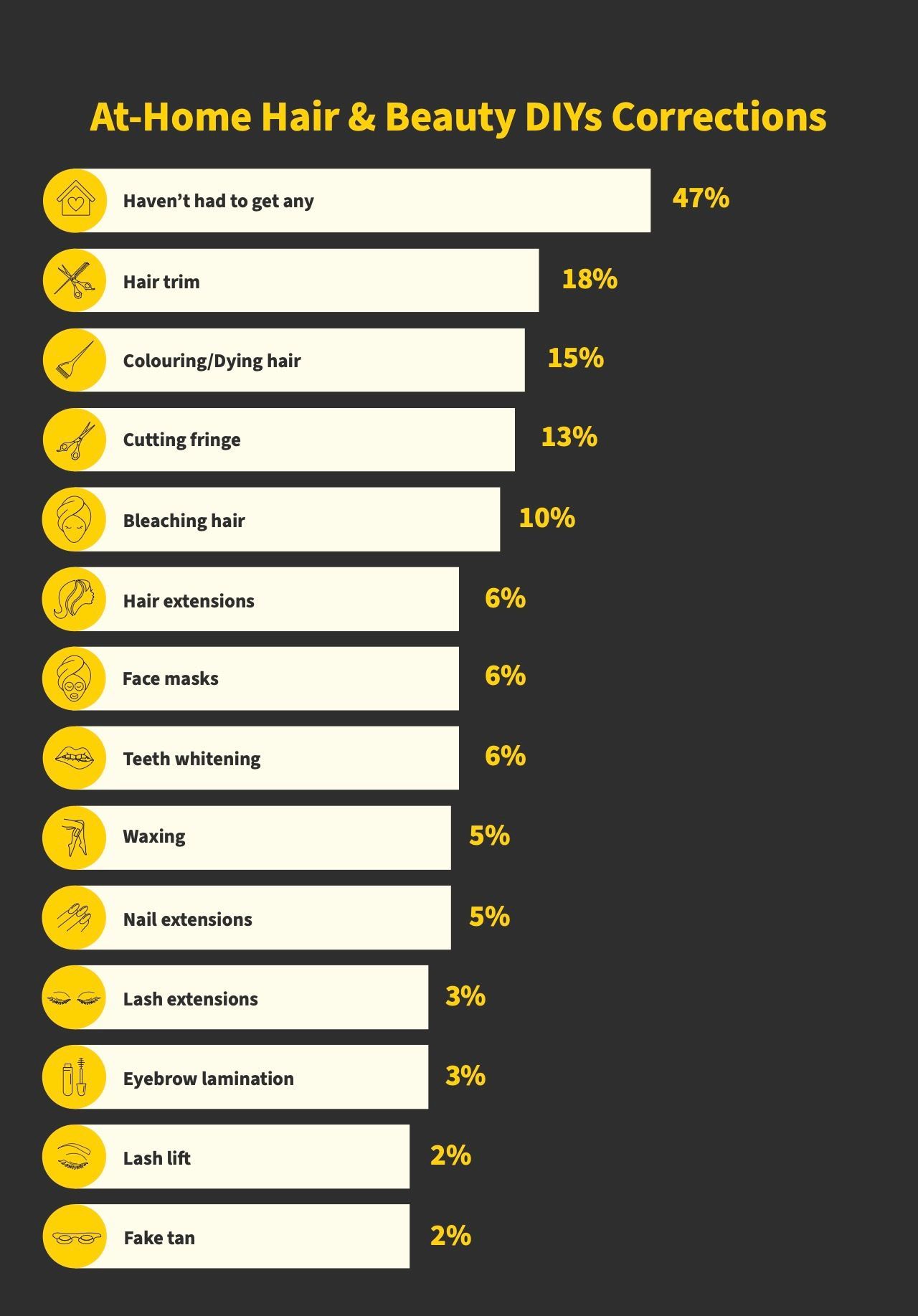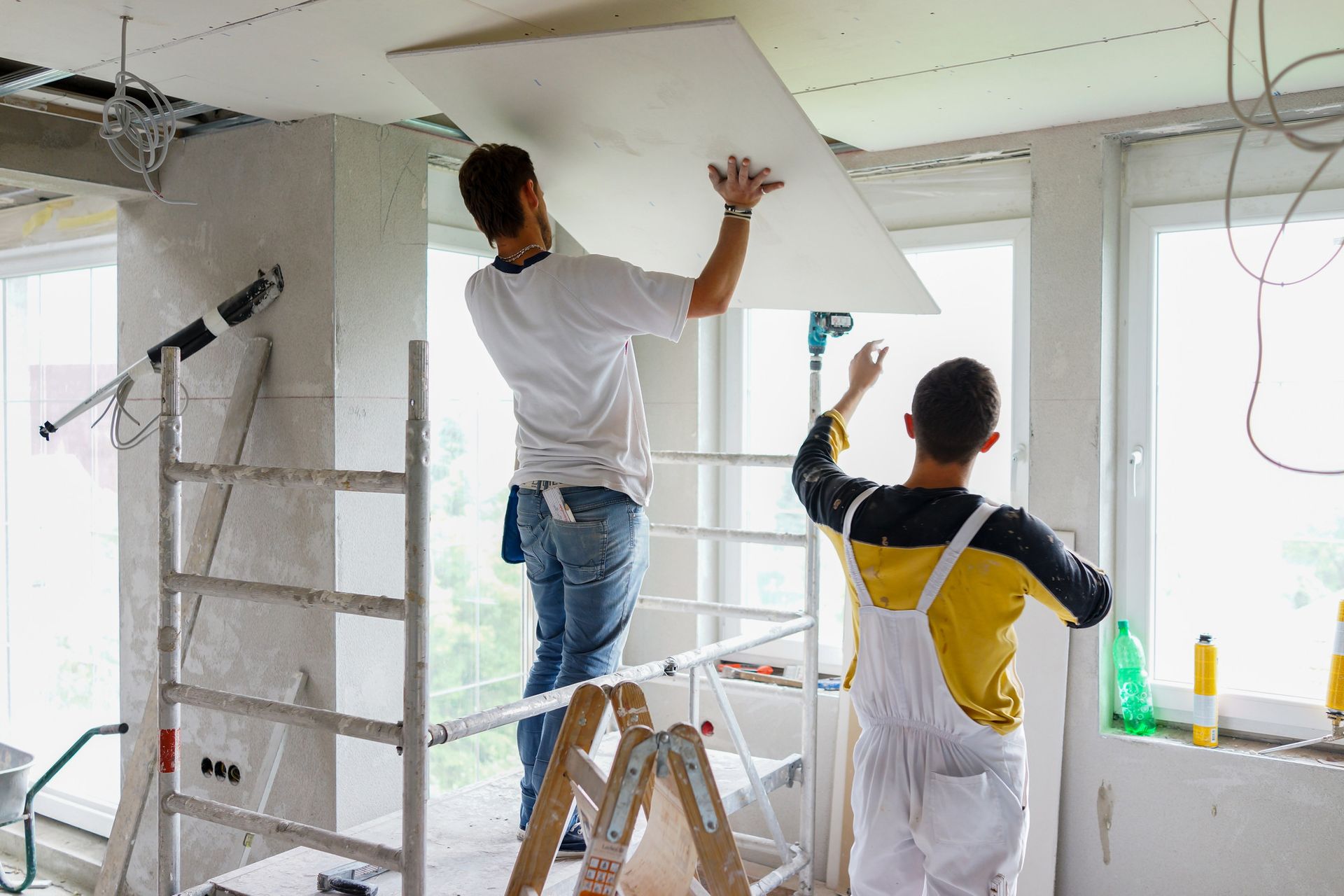68% of Brits Attempt DIY Hair and Beauty Treatments to save money
A survey by Yell has found that 90% of Brits admit to attempting DIY hair & beauty treatments at home before seeing a professional, with 68% of those claiming to do so just to save money. When it comes to DIY home treatments, hair and beauty are some of the most DIY-ed projects out there. From cutting your hair to doing your own lash extensions, has revealed the most common at-home DIY hair and beauty mishaps and which of those are most commonly corrected by a professional.
The Trend of DIY
At-home DIY treatments have increased in search demand over the years. From “how to cut your own hair” seeing 4,500 searches a month to “how to do gel nails at home” and “at home lash lift” with 1,000 Google searches a month between them, 2023 is increasingly seeing Brits jump onto the DIY bandwagon.
The internet is a huge educational tool when it comes to DIY hair and beauty treatments. Social media platforms such as YouTube and TikTok are prime spaces for getting your ‘how-tos’ for hair and beauty recommendations. Over 57% of those surveyed used YouTube and 29% used TikTok to get their tips on how to do an at-home DIY.
TikTok is moving up the ranking of the most commonly used platform for 18 to 25-year-olds as 48% of those surveyed claim to use TikTok for hair and beauty tips - the highest of any demographic. According to TikTok data, 94% of users say they learned new tips and tricks about beauty from TikTok, while 90% of users agree that TikTok provides inspiration when it comes to at-home beauty with tutorials being 2.4 times more important to TikTok users. Ironically TikTok views for the hashtag #HaircutFails is at 26.6 billion views on the platform, while DIY ‘haircut at home fails’ is at 163.1 million views.
Interestingly expert guides from hairdressers and beauticians are least likely to be used for tips and advice, with only 25% using this for their DIY.
The Most Popular At-�������� Hair & Beauty DIYs
As the season changes, we have all been guilty of giving in to a seasonal makeover. Thoughts of “Should I dye my hair auburn for the winter” and “Maybe I’ll give myself a fringe” fill our heads much to the dismay of hairdressers and beauty specialists across the country. From celebrity fads to online trends and special occasions, many factors encourage people to change their looks - but what is encouraging them to DIY rather than seek a professional?
According to those surveyed, the majority (68%) of DIY-ers admit to attempting DIY treatments at home to save money. This is followed by saving time (42%) and because it looked easy on social media (23%). 18-25-year-olds are least likely to try a DIY to save money, instead being inspired to take the jump as social media has made it look easy to do.
The most common at-home DIYs are facemasks (55%), trimming hair (50%), colouring hair (48%), cutting fringe (36%) and even teeth whitening (33%). However, whilst they might be saving money short-term “DIY-ing” at home, in the long run, 65% admit to having spent over £50 getting professionals to fix hair and beauty treatments they have done at home.

Getting Corrected
DIY hair and beauty treatments don’t always go as planned, whether some bleach has burnt off your hair, or at-home eyelash extensions have gone wrong. Whilst we may be saving money short term - often a bad at-home DIY means a swift trip to visit a professional to get it fixed. 52% of those surveyed have had to get an at-home treatment corrected by a professional.
The most commonly corrected DIYs are trimming hair (18%), colouring/dying hair (15%) and cutting a fringe (13%). Interestingly 26-33-year-olds are most likely to be returning to the salon after bleaching their hair at home, while 34-40-year-olds are most likely to have to get an at-home treatment corrected.

Cost of Corrections
While DIY may be initially to save money, a correction can be costly. 62% of those surveyed admit to spending between £50 and £500 on getting things corrected by a professional. An average of £123 per person is regularly spent on top of the original DIY price to fix any mistakes, fails and mishaps. This can be anything from hair colour disasters, bleaching gone wrong or beauty treatments such as nail or lash extension corrections. 3% of those surveyed have even paid over £500 to get a DIY corrected. 26-33-year-olds are likely to spend the most on corrections (£139.74), while 18-25 spend the least (£107.94).
Regional Differences
Whilst people across the UK are trying at-home hair and beauty treatments, Londoners are most likely to try DIY-ing (96%) - especially when it comes to Hair Extensions (24%), Lash Extensions (16%) and Eyebrow Lamination (13%). The East Midlands are least likely to have tried to DIY a hair or beauty treatment (84%).
If you're from Scotland you are least likely to be influenced by a celebrity when it comes to trying out a new hair or beauty trend at home (3%), while Londoners are most likely to use TikTok (39%) or Influencers (34%) for their inspiration.
Londoners are also most likely to have to get a DIY corrected with 70% admitting to having something corrected by a professional. They are most likely to have to seek the help of a professional to correct at-home Hair Extensions (13%) and Lash Extensions (7%). Only in the East of England do individuals have to get their Gel Nails corrected by a professional.
Londoners are spending the most when it comes to corrections, spending an average of £156.71 on a correction, whilst the North East is spending the least at £80.51 on average.
Leave it to the professionals
Whilst saving money short term may seem like a good idea, not only could this leave you with botched haircuts or a dodgy set of nails, but often these DIY treatments don't follow proper instructions and regulations, which may harm your health. And let’s not forget the results from a famous
About Yell
Yell Ltd exists to connect businesses and consumers via its leading marketplace for local services and offering managed digital marketing helping businesses to find, connect and sell to consumers online. Yell Ltd is a proud Google Premier Partner, Microsoft Advertising Elite Channel Partner, and Meta Business Partner.
Learn more at and our Media Centre
Visit our social media channels: , , ,
Download the free Yell consumer app from the or
Download the free Yell for Business app from the or
For media enquiries, please email:



Follow us on
© Yell Holdco Limited 2024. Registered office: 3 Forbury Place, Forbury Road, Reading, RG1 3YL. Registered in England & Wales No: 12315720. VAT No: GB 765 346 017. All rights reserved. ‘��������’, ‘Yell’ are trademarks of Yell Limited or its licensors. Other trademarks, service marks, logos, and domain names are the property of their respective owners.